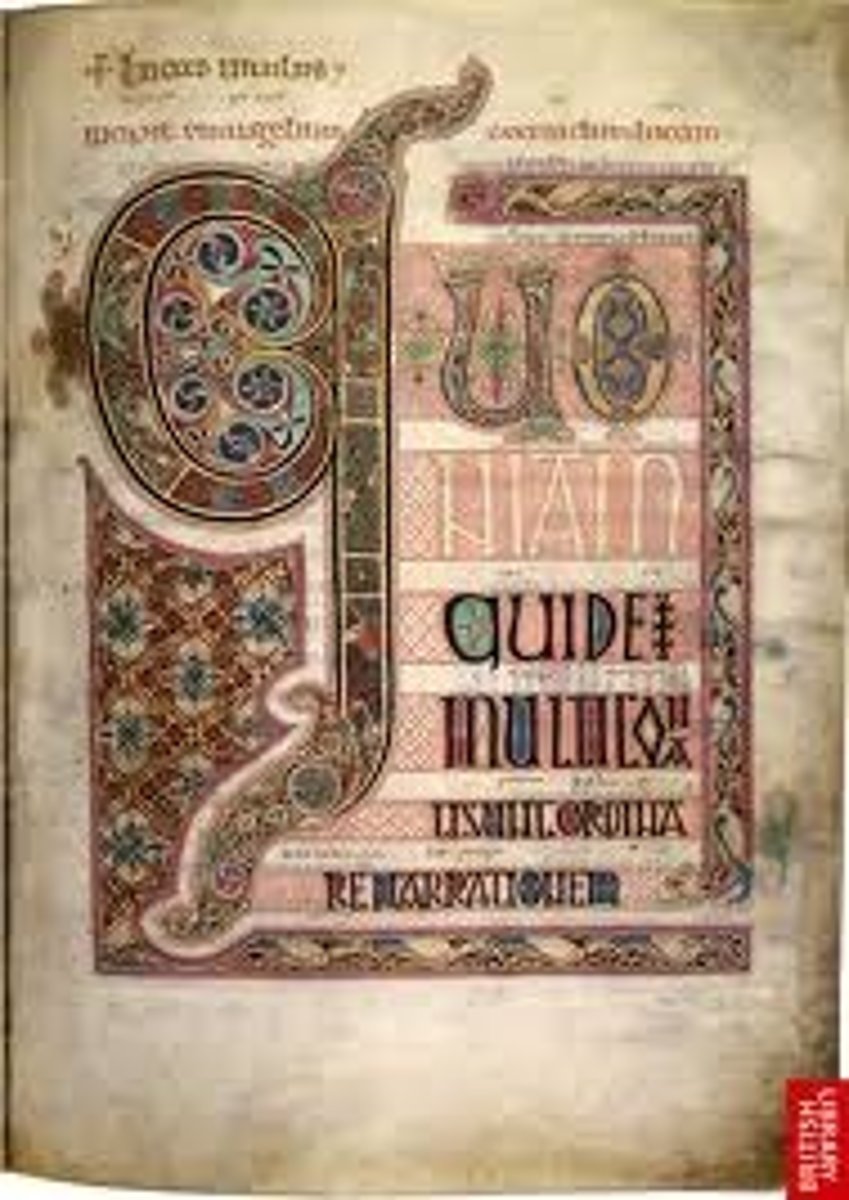Early Medieval Art
1/4
There's no tags or description
Looks like no tags are added yet.
Name | Mastery | Learn | Test | Matching | Spaced |
|---|
No study sessions yet.
5 Terms
- cloisonné and chasing techniques
- zoomorphic elements
- small + portable
- decline of classical tradition
- probably owned by rich Merovingian woman; meant to go w/ her to afterlife
- fish below center of each pin
- all surfaces covered; decorations adjust to shape
Merovingian looped fibula
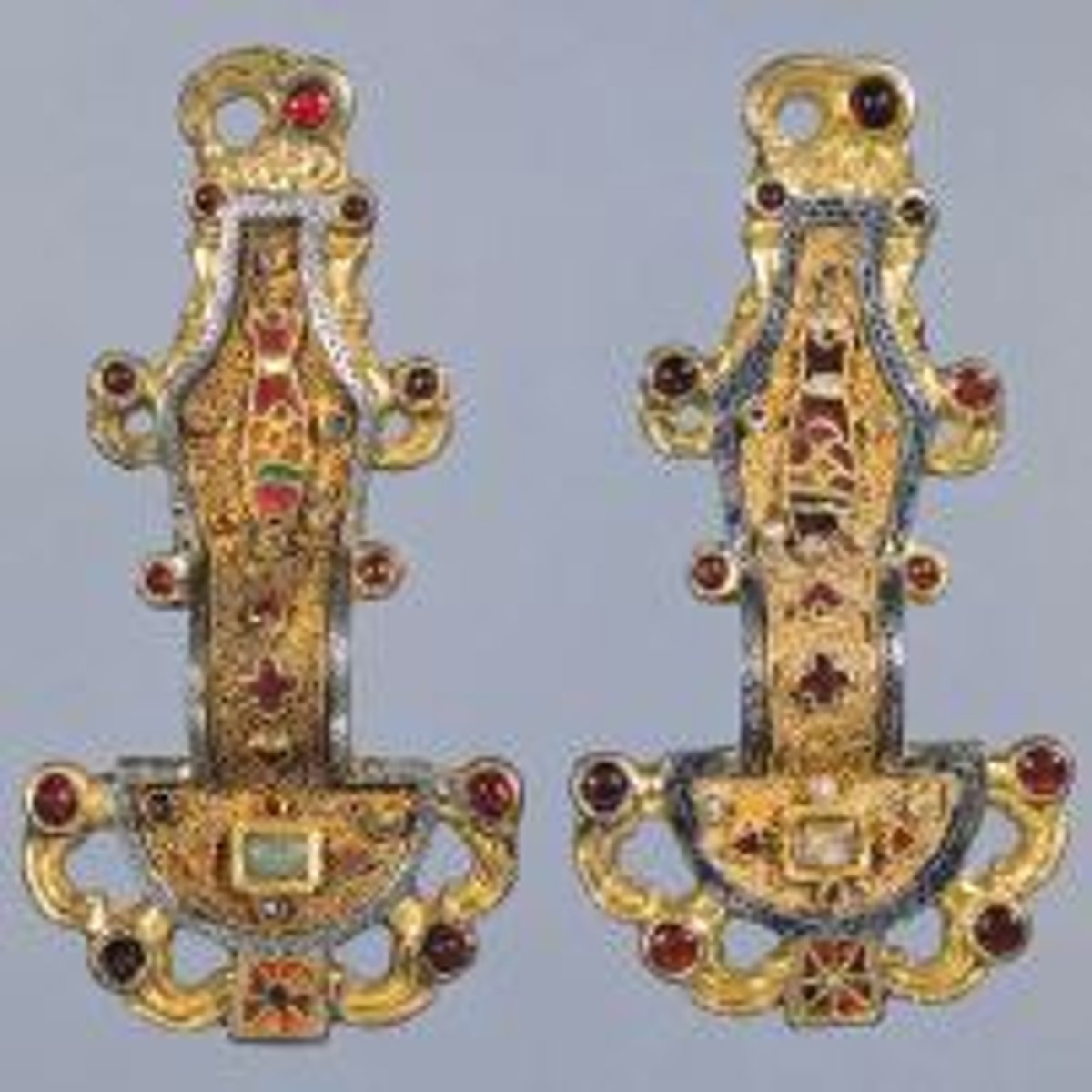
- written by Eadrith, bishop of Lindisfarne
- unusual: made by one person, not a team
- Latin w/ annotations in English between lines; English added around 970, called Anglo-Saxon miniscule
- one of oldest surviving manuscript of Bible in English
- uses Saint Jerome's translation of the Bible: "The Vulgate"
- 130 calf skins used
- colophon discusses making of
Lindisfarne Gospels
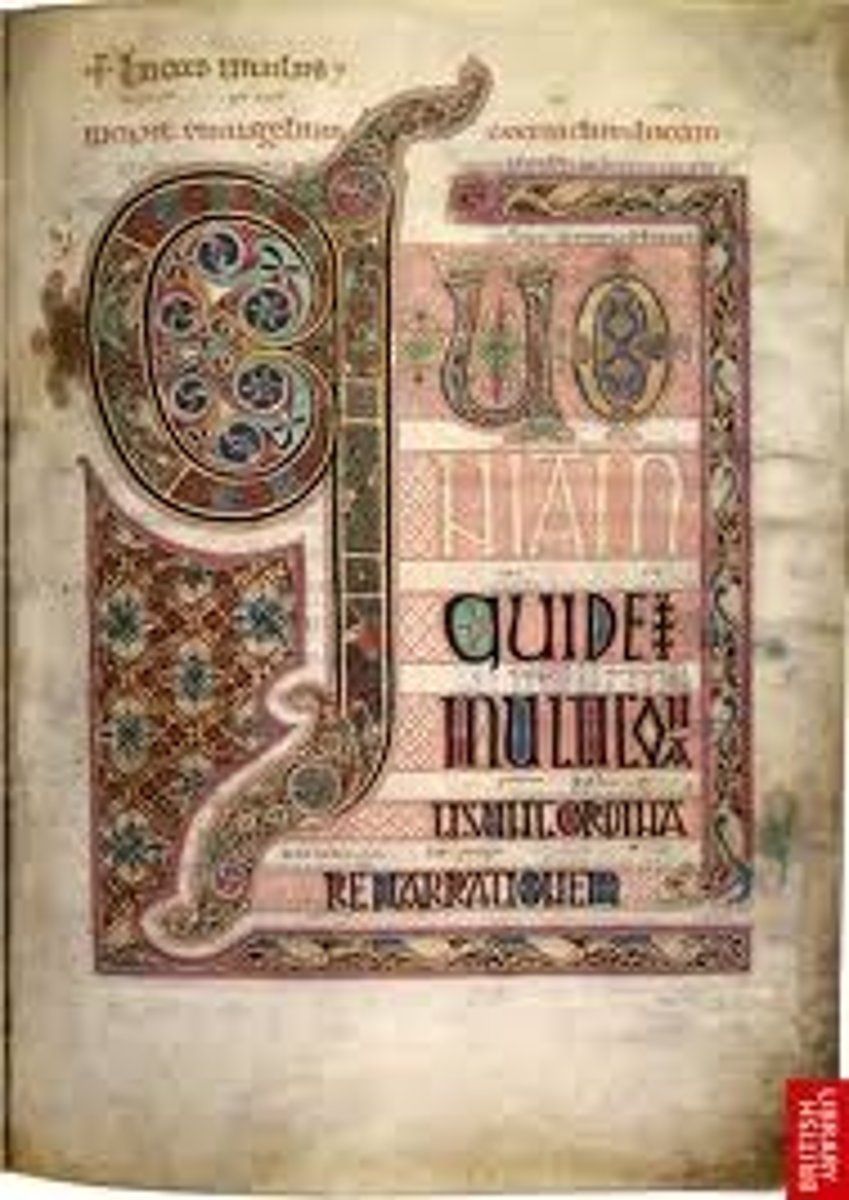
- cross depicted on page filled w/ horror vacui decoration
- dog-headed snakes intermix w/ birds w/ long beaks
- cloisonné style used in bodies of birds
- elongated figures lost in maze of S shapes
- symmetrical arrangement
- black background makes patterning stand out
- mixture of traditional Celtic imagery and Christian theology
Cross Page from the Book of Matthew
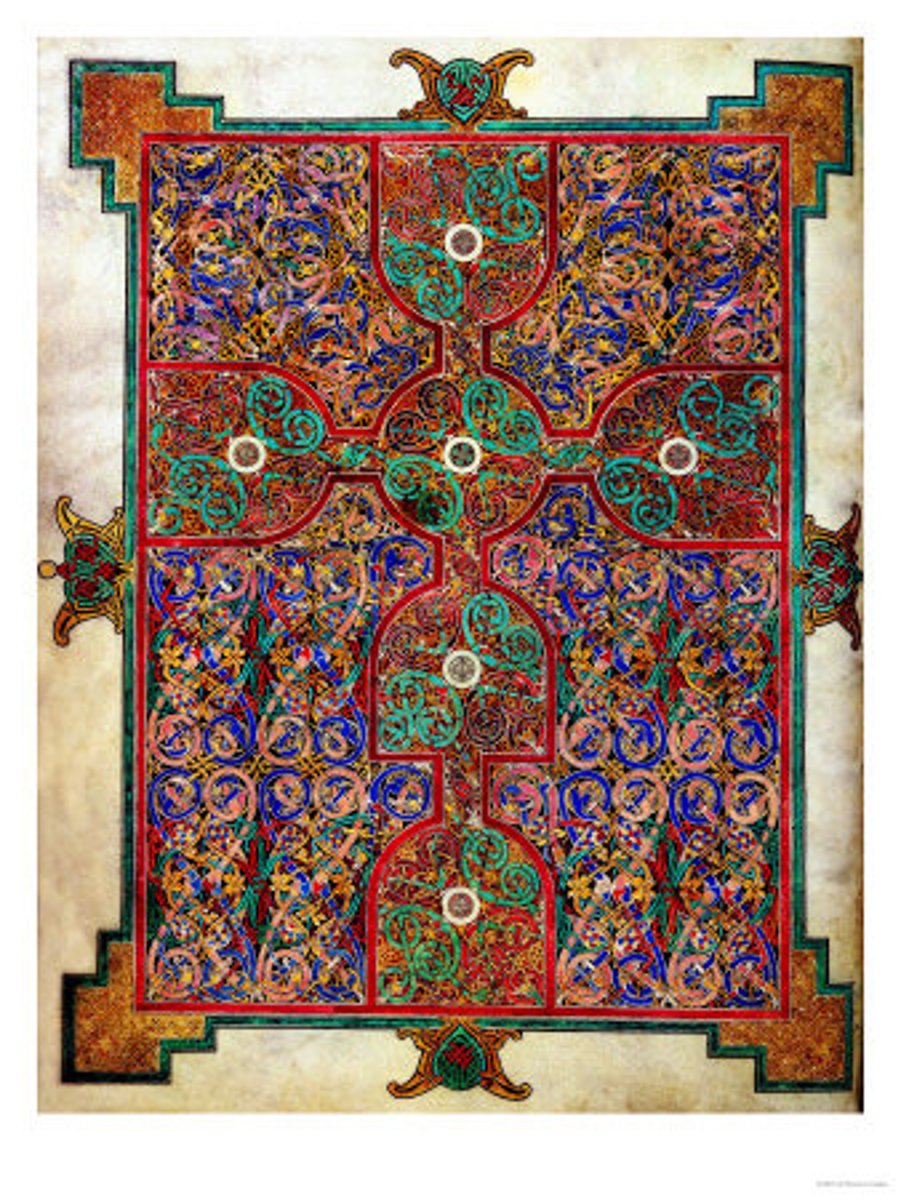
- traditional symbol associated w/ St. Luke: calf (sacrificial animal)
- identity of calf acknowledged w/ "imago vituli"
- St. Luke identified by Greek words using Latin characters: "Hagios Lucas"
- heavily bearded Saint Luke gives weight to authority as author, but appears younger man
- sits w/ legs crossed holding scroll and writing instrument
- writing his gospels
Saint Luke Portrait
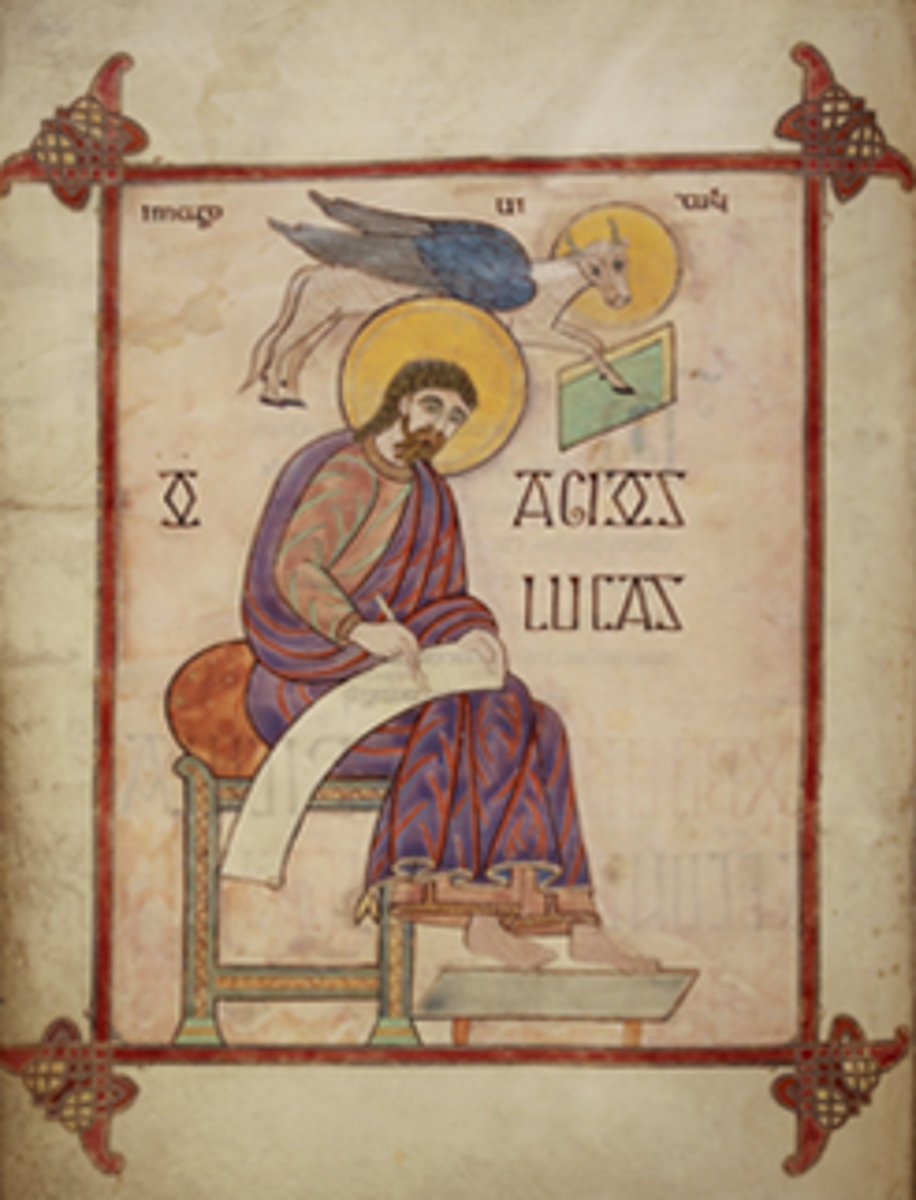
- "incipit": opening words of Saint Luke's gospel: "Quoniam Quidem . . ."
- numerous Celtic spiral ornaments; step patterns appear in enlarged O
- lower right corner: naturalistic detail of cat who has eaten eight birds
Saint Luke Incipit Page
